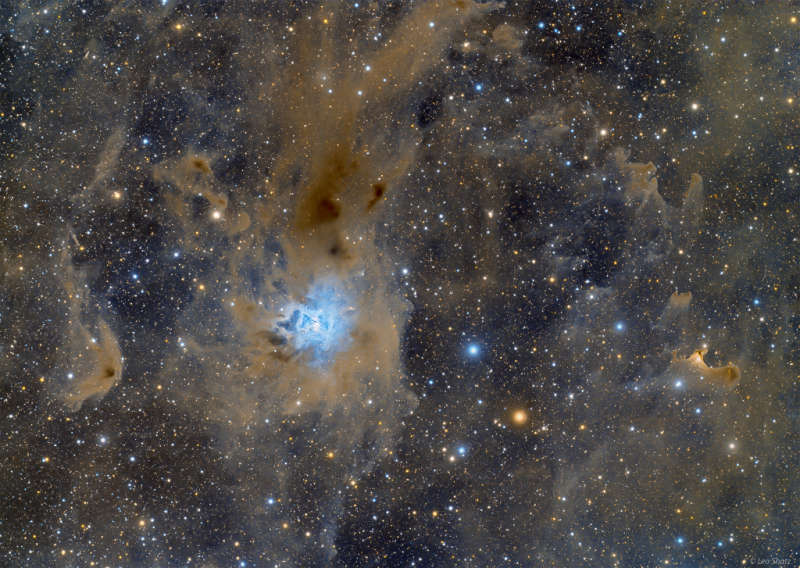
|
Credit & Copyright: Leo Shatz
Explanation:
Spooky shapes
seem to haunt this dusty expanse,
drifting through the night in the royal constellation
Cepheus.
Of course, the shapes are cosmic dust clouds visible
in dimly reflected starlight.
Far from
your own
neighborhood,
they lurk above the plane of the Milky Way at the edge of the
Cepheus Flare
molecular cloud complex some 1,200 light-years away.
Over 2 light-years across and brighter than most of the other ghostly
apparitions, vdB 141 or Sh2-136 is also known as the
Ghost Nebula,
seen at the right of the starry field of view.
Inside the nebula are the telltale signs of dense cores
collapsing in the early stages
of star formation.
With the eerie hue of dust reflecting bluish light from hot young stars of
NGC 7023, the Iris Nebula
stands out against the dark just left of center.
In the broad telescopic frame,
these fertile interstellar dust fields stretch
almost seven full moons across the sky.
|
January February March April May June July August September October November December |
| ||||||||||||||||||||||||||||||||||||||||||||||||
NASA Web Site Statements, Warnings, and Disclaimers
NASA Official: Jay Norris. Specific rights apply.
A service of: LHEA at NASA / GSFC
& Michigan Tech. U.
Based on Astronomy Picture
Of the Day
Publications with keywords: molecular cloud - star formation
Publications with words: molecular cloud - star formation
See also:
- APOD: 2025 August 1 Á Small Dark Nebula
- APOD: 2025 July 10 Á Lynds Dark Nebula 1251
- APOD: 2025 June 23 Á W5: Pillars of Star Formation
- APOD: 2025 April 28 Á Gum 37 and the Southern Tadpoles
- APOD: 2025 March 26 Á Star Formation in the Pacman Nebula
- The Protostars within Lynds 483
- Stardust in the Perseus Molecular Cloud
